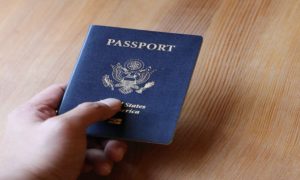As a child growing up in the South, I remember “throwing a hissy” when my mother would announce it was nap time. It seemed like such a pointless waste of a perfectly good afternoon that I could spend riding my bike, playing with friends, or doing anything other than lying in my bed, willing the clock to move a little faster.
Read More : 3 Reliable Dividend Stocks With Yields Above 9% You Can Buy With Less Than $100 Right Now
Fast forward 50 years, and I now understand that my nap time might have been as much for my mother as it was for me. Today, I’m more likely to throw a hissy if I don’t get a short siesta once or twice a week.
I’m not alone. Studies show that we are a country of sleep-deprived humans who race through life at warp speed without allowing ourselves time to rest and recover. While that may not seem like such a big deal in our youth, the older we get, the more our bodies demand that rest to function effectively. The CDC recommends a minimum of seven hours per night for adults ages 18-60 and reports that a third of Americans regularly get less than that amount.
Perhaps that’s why so many adults are beginning to schedule micronaps into their day. This brief period of sleep can offer a variety of benefits that go beyond just feeling more well-rested.
What is a micronap?
My mother’s generation called it a “cat nap.” My college friends and I called it a “disco nap” because it helped us refresh before a night on the town. More recently, it became known as the “power nap,” perhaps to justify crashing on your office couch. Whatever you call it, don’t sleep on the benefits of this super short slumber. Not to be confused with microsleep, a potentially dangerous problem that occurs unintentionally when the body is in a state of sleep deprivation, micronaps are short intentional intervals of shut-eye. “Intentional” is the keyword here. “When people say micronapping, they’re referring to a type of regular power nap where they sleep 20 to 30 minutes at the same time each day to replenish themselves,” explains sleep expert Dr. Samuel Gurevich via the Cleveland Clinic. “They’ve trained their bodies to expect this time, and the habit works well for some. It puts a little more fuel in their tank.”
Why Is Micronapping Necessary?
Read More : Is Ordinary Angels on Amazon after theaters? (Where to stream)
Sleep is one of the easiest and most beneficial ways to care for your overall health, yet millions don’t prioritize it. We sacrifice sleep to answer one more e-mail, watch one more episode, or have one more drink. Some people even glorify lack of sleep, wearing exhaustion as a badge of honor and a testament to their busy lives. But what we are sacrificing here is more than just shut-eye. The benefits of a deep sleep go deeper than just feeling well-rested throughout the day. According to The Sleep Foundation, just like charging your devices at night allows them to function at capacity, sleep recharges and restores your body’s many systems to keep you moving full steam ahead. Regularly getting a good night’s sleep has been shown to improve many physical and mental issues, including cardiovascular health, while alleviating anxiety and depression, strengthening the immune system, regulating blood sugar, and helping to maintain a healthy weight.
How to Micronap Like A Champ
Read More :Republican Deals Major Blow to Donald Trump PAC
While one short nap isn’t going to replace a good night’s sleep, you can still reap some of these benefits. A quick nap can help you feel more alert throughout the remainder of your day, and according to the Mayo Clinic, it may also improve things like reaction time, memory, and overall mood. As for the bigger issues, one study indicates that short naps may still positively impact the immune system, while another study concluded that “subjects who nap once or twice per week have a lower risk of incident CVD
Everyone knows someone who can doze at the drop of a hat. My father is one of these people, and I envy his professional napping ability because I do not share it. If you, too, struggle to sleep during the day, the following tips can help you learn to nap like a champ.
- Timing is everything. If you nap too early, it’s hard to fall asleep. If you nap too late, you may interfere with bedtime. So what’s the sweet spot? According to Jeff Rodgers, DMD, a certified sleep expert with the American Board of Dental Sleep Medicine and the American Sleep and Breathing Academy, it’s between 1 and 3 p.m. “These hours are a natural slump time for humans,” he explained to Healthline.
- Set a mood. Make your nap space dark, cool, and cozy. If getting back into bed feels strange, curl up on the couch.
- Consider props. A soft blanket, an eye mask, black-out curtains, ear plugs, or a white noise machine can all help create an ideal nap environment and help you fall asleep faster.
- Set your alarm. Make sure you set your alarm for 30 minutes max. When the alarm goes off, get up—no hitting the snooze button unless you want to be up all night.
The Final Word
Read More :Republican Deals Major Blow to Donald Trump PAC
While it’s common to need a nap now and then, if you find yourself unable to function without one daily, you may need to reevaluate your nighttime routine. Additionally, if you struggle with low energy or extreme fatigue regularly, consult your doctor to rule out any underlying health issues. Remember, you should not use a nap instead of good sleep habits, but it can be an excellent tool when you need a little extra push to power through.































